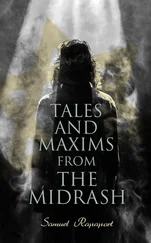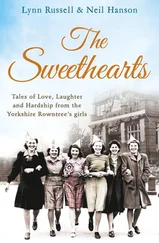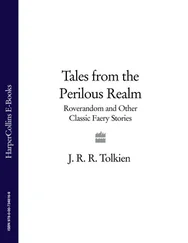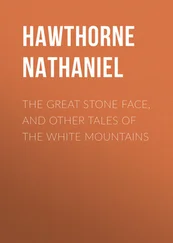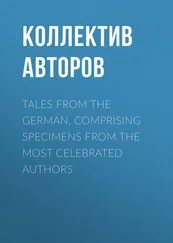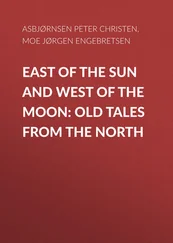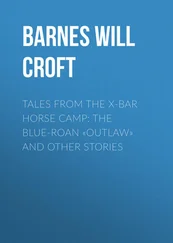Pliny Goddard - Myths and Tales from the White Mountain Apache
Здесь есть возможность читать онлайн «Pliny Goddard - Myths and Tales from the White Mountain Apache» — ознакомительный отрывок электронной книги совершенно бесплатно, а после прочтения отрывка купить полную версию. В некоторых случаях можно слушать аудио, скачать через торрент в формате fb2 и присутствует краткое содержание. Жанр: foreign_antique, foreign_prose, на английском языке. Описание произведения, (предисловие) а так же отзывы посетителей доступны на портале библиотеки ЛибКат.
- Название:Myths and Tales from the White Mountain Apache
- Автор:
- Жанр:
- Год:неизвестен
- ISBN:нет данных
- Рейтинг книги:4 / 5. Голосов: 1
-
Избранное:Добавить в избранное
- Отзывы:
-
Ваша оценка:
- 80
- 1
- 2
- 3
- 4
- 5
Myths and Tales from the White Mountain Apache: краткое содержание, описание и аннотация
Предлагаем к чтению аннотацию, описание, краткое содержание или предисловие (зависит от того, что написал сам автор книги «Myths and Tales from the White Mountain Apache»). Если вы не нашли необходимую информацию о книге — напишите в комментариях, мы постараемся отыскать её.
Myths and Tales from the White Mountain Apache — читать онлайн ознакомительный отрывок
Ниже представлен текст книги, разбитый по страницам. Система сохранения места последней прочитанной страницы, позволяет с удобством читать онлайн бесплатно книгу «Myths and Tales from the White Mountain Apache», без необходимости каждый раз заново искать на чём Вы остановились. Поставьте закладку, и сможете в любой момент перейти на страницу, на которой закончили чтение.
Интервал:
Закладка:
“Let us go over there,” one of them proposed. They went to a fenced enclosure and entered through a gate. The yard was so full of black bears that the mass of their moving backs occupied the entire space. “Which of those are my horses?” the Sun asked. “They are fearful animals,” the boys replied. “These are my horses,” the Sun insisted and mounted one of them and rode around on it. The fly informed the boys that they were being deceived. The Sun proposed that they should go in another direction to another enclosure. Inside this yard were white-tail deer, mule deer, elk, and mountain-sheep. The Sun announced that these were his horses and told the boys to choose any one they liked and catch it. “Which is the largest?” he asked them. “These are not horses,” the boys replied, “they are named deer. We asked you for horses.” The Sun insisted they were his horses and that he rode them great distances. “Well, you have outwitted me. I thought I would succeed in outwitting you, but you have won.” The younger brother asked the Sun what he was concealing from them, saying he could find them. The Sun asked them not to say that and proposed that they look in another place where he had a few horses confined. They went to the place indicated and found the place filled with antelope, sheep, goats, and pigs. “Catch any one of these you want,” the Sun said. “You tend to them here alone,” the boys replied and walked out leaving the Sun who followed behind.
They went to the house and ate a meal. Their fly told them that the Sun's horses were in the enclosure that had four doors. When they had finished eating they went to this enclosure which was a house with a roof having holes in it. It had spikes like irons, sticking up from it. It was closed and completely dark. “There are horses in there,” the fly told them. The Sun said, “I told you it was useless.” One of the boys asked that they might look in. There was a door there which he opened. A little beyond it was another door, a little beyond another, and a little beyond that another, and still beyond that another. They now came to horses in the enclosure but could not enter. By standing on something they could see through a hole in the roof. They could not get in between the horses until they were caused to separate and to open up a passage. The Sun then told them to catch the horse that they thought was his. The fly sitting by one of their ears told them they were to catch the horse with a rope which they should induce the Sun to give them. When the Sun again urged them to catch the horse without delay, they asked whether they should lead the horse by the mane or carry him out in their hands. The Sun, with spotted ropes in his hand, went right through the door which he opened. He gave one of the ropes to each of the boys, telling them to catch the horses which were his. The animals were milling around in the enclosure. In the center was one which was not moving, a sorrel with a small white spot on its forehead. Its mane reached the ground. When it raised its head one of the boys started toward it, the horses separating. He threw the rope and caught the horse which he led back. The Sun then told the other boy to catch a horse, wanting to know who had told him which horse to catch. There was a stallion running around the outside of the herd. Its mane reached the ground; he was acting wild but the fly told them that although he acted as if he were mean he was really gentle. He directed them to take both these horses from the Sun. When the other boy started with his rope toward the stallion he was running around the outside of the herd and coming toward the boy. When he came close and saw the boy he stopped and then wheeled back. The boy lassoed it and immediately the horse trotted up to him, nosing his arm. He led the stallion up beside the sorrel horse which was a mare. The Sun said: “There they are, ride them, take them with you to the earth.”
The boys then asked for the horse trappings for which they had also come. The Sun said he did not know what they meant by horse trappings. The younger boy said, “Well, if you do not know what horse trappings are, do not again put them on these horses in the corral.” The Sun asked who it was who had made them as smart as he was himself. They replied that he, the Sun, had made them smart and had made them speak wisely. They then asked by name for bridle, halter, saddle blanket, and saddle. 11 11 To know by name things or animals hitherto unknown is often mentioned as a great feat. P. 24.
Turning his back to the boys he walked away and opened a door, bidding the boys enter. They went in and saw saddles lying there with bridles hanging on the saddle horns. The blankets were lying beneath. Before they went in the fly flew in and selected two out of all the saddles. One was lying at the east and the other at the west. The first was blue and the other yellow. The fly had returned to one of their ears by the time the Sun said: “There are those saddles, take the ones you want.” The fly told the boys that the saddles which looked good really were not, but that they should choose the blue and yellow ones, indicating them, and the blankets, halters, bridles, and ropes of similar colors lying by them. These were the Sun's own particular set of trappings. When the Sun urged them to hurry up each boy stepped toward the saddle he had chosen. When they did so the saddles moved of themselves with the blankets and bridles. There was a sound “gij” of the moving leather and “tsil” as they came to rest.
The Sun turned his face away and took a black silk handkerchief which had two white stripes around the border from his pocket. With this he wiped his eyes. “I raised you for just this purpose,” he said. The Sun started to walk toward the horses. Their fly had told them not to touch the saddles, that the Sun himself would fix them. “They belong to you,” the fly said. “Everything is alive; the rope on the horse moves about of itself. The saddle will jump on of itself.” 12 12 It is seldom that the Apache conception of animism is so plainly stated. Songs however abound in the designation of objects as “living.”
The fly told them this. The halter was gone, the bridle and saddle blanket which had been lying on the saddle were gone. The halter, bridle, and saddle blanket that had been with the blue saddle were also gone. The Sun called them to come where he was standing. They both went out again and the doors of the saddle room and of the stable were shut.
They went to the Sun, who was standing between the two horses so that their heads projected as he held the bridles. They started away, the boys walking in front of the Sun as he directed them to do. They passed through the four doors to a post standing in front of the Sun's house. He led the horses to the post where they stood without being tied. 13 13 When a youth went through an adolescence ceremony he did it with a definite career in mind. The normal myth of this type put the emphasis on the weapons secured and feats of warlike prowess in killing the monsters; that is, the warrior idea is uppermost. This version stresses the acquisition of horses and probably is a specialized myth for those who wish to be successful in acquiring and breeding horses.
There were four chairs standing inside the Sun's house; and one by itself for the woman. 14 14 The house of the Sun with the stable and corral, the furniture of the house, and many other references indicate the home of a European and such seems to be the conception.
His children sat on the chairs and his wife sat on the one which was hers. The Sun addressed them as follows: —
“My boys, I will instruct you about the dangerous places you will come to. The horses know the dangerous places on the way back. My wife is pleased with you and treats you well. That is why you are to have these horses, one of which is hers. The other is mine and so is the saddle, bridle, halter, and saddle blanket. They are all mine. You will go back to your kindred. When you are near, hurry. I will give you something.”
Читать дальшеИнтервал:
Закладка:
Похожие книги на «Myths and Tales from the White Mountain Apache»
Представляем Вашему вниманию похожие книги на «Myths and Tales from the White Mountain Apache» списком для выбора. Мы отобрали схожую по названию и смыслу литературу в надежде предоставить читателям больше вариантов отыскать новые, интересные, ещё непрочитанные произведения.
Обсуждение, отзывы о книге «Myths and Tales from the White Mountain Apache» и просто собственные мнения читателей. Оставьте ваши комментарии, напишите, что Вы думаете о произведении, его смысле или главных героях. Укажите что конкретно понравилось, а что нет, и почему Вы так считаете.


